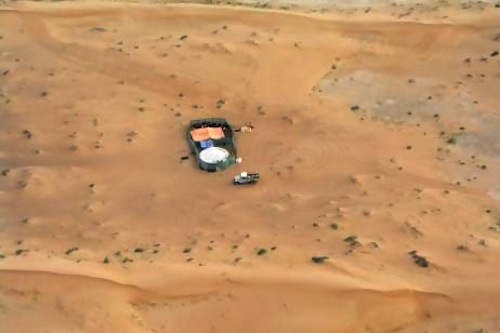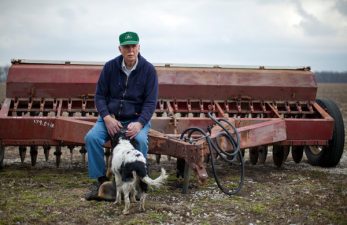 Agricultural scientist Tony Rinaudo is behind one of the world’s most successful reverse desertification projects – in Niger, and now he thinks a similar underground forest might exist in the Arabian desert outside of Dubai.
Agricultural scientist Tony Rinaudo is behind one of the world’s most successful reverse desertification projects – in Niger, and now he thinks a similar underground forest might exist in the Arabian desert outside of Dubai.
The natural resources adviser for the charity World Vision Australia, Rinaudo first happened upon a land regeneration technique known as farmer managed natural regeneration (FMNR) in Niger during the 1980s.
Albeit not new, since Europeans have been using the method to grow trees for thousands of years, Permaculture News points out that it was new to Niger when it was first introduced out of sheer desperation following years of desertification, drought and then famine.
After failing at a series of misguided but well-intentioned efforts to transform a swatch of arid land in the west African country into thriving, fertile ground, costing millions of dollars in wasted money and 20 years of effort, Rinaudo one day realized that the stumps poking out of the desert might be alive.
And indeed they were. A veritable forest lay beneath the desert and – through a program managed by Rinaudo, the local farmers very carefully brought it back to life.
“The answer to the devastating desertification that was depriving countries across Africa of the food they so vitally needed was not, Mr Rinaudo concluded, the impossibly expensive and rarely successful programme of tree-planting being pursued by governments and NGOs, but ‘a two-dollar pocketknife,'” writes Permaculture News.
That pocketknife is FMNR, which involves selecting certain tree stumps (long since felled or compromised by grazing and razing forests for charcoal) and deciding how many shoots or stems should be grown on each one. This depends on the particular farmer’s dictate and needs.
Excess stems are then cut; for more on this, take a look at this wonderful PDF from Permaculture News.
Using FMNR in Niger revitalized soil quality, boosted water retention, fought off erosion and in general improved the microclimate – the trees shot up without any of the expensive interventions used in prior experiments. As a result, tree density skyrocketed from three or four trees to a hectare to 45 or more, according to The National.
But what does this have to do with Dubai?
Turns out The National submitted Google images of an old goat farm outside of Dubai, where stumps jut out from the soft, sandy Arabian Desert, and without having visited the site, Rinaudo predicts that they may well be living trees that simply need a little FMNR.
“”The ‘bushes’ growing in these very arid regions look amazingly like the ‘useless’ bushes we encountered in Niger, which turned out to be tree stumps,” he told the paper.
“If you were born into a landscape with no trees, you will be very unlikely to make the link between those abused, miserable-looking bushes, and the magnificent trees that they once were.”
:: The National
Image via Mayang




3 thoughts on “Is There a “Forest” Under the Desert Outside of Dubai?”
Comments are closed.